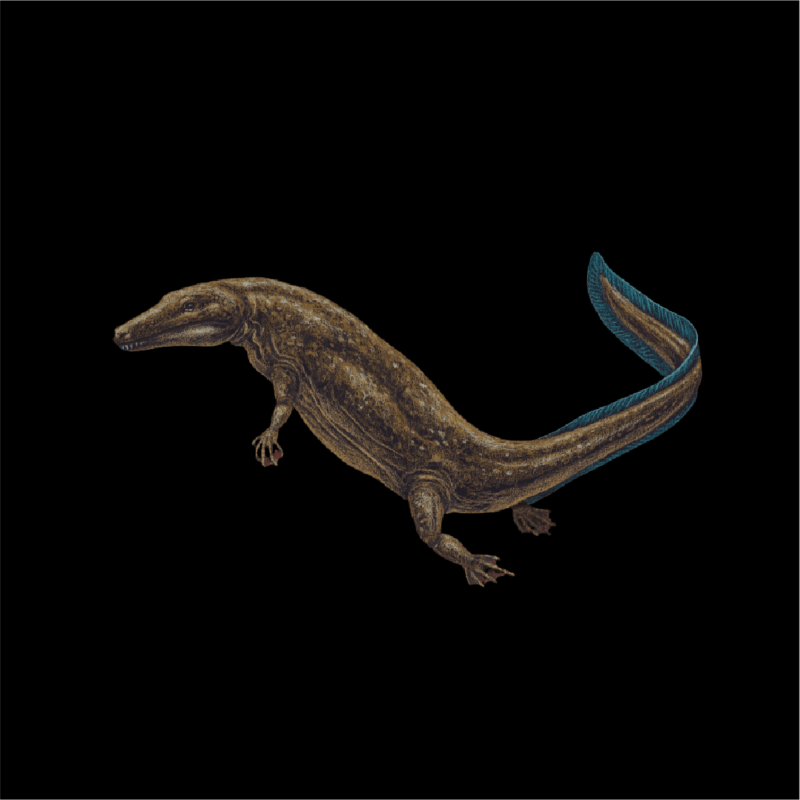Archeria cassidisca
The ability to swim and crawl
With its crocodile-like body and eel-like tail, Archeria moved smoothly through the waters of the Permian period. Its mouth had about 200 small teeth that it used when hunting its favourite food, smaller fish. Its body was elongated, and its flat tail and limbs with interdigital webbing most likely served as paddles. In this way, it was able to move easily in deep water, where its elongated body swam through the water column with the help of its paddling arms, legs and tail.
However, some researchers have also suggested that it may have used its four legs to walk around the ocean floor or climb over obstacles. The body of Archeria crassidisca clearly demonstrates the transition from fish to four-legged animals.
Size: Up to 2 metres long
Weight: Unknown
Period: Early Permian Period (299–290 million years ago)
Food: Carnivores
Habitat: In water
Locations: Texas and Oklahoma






